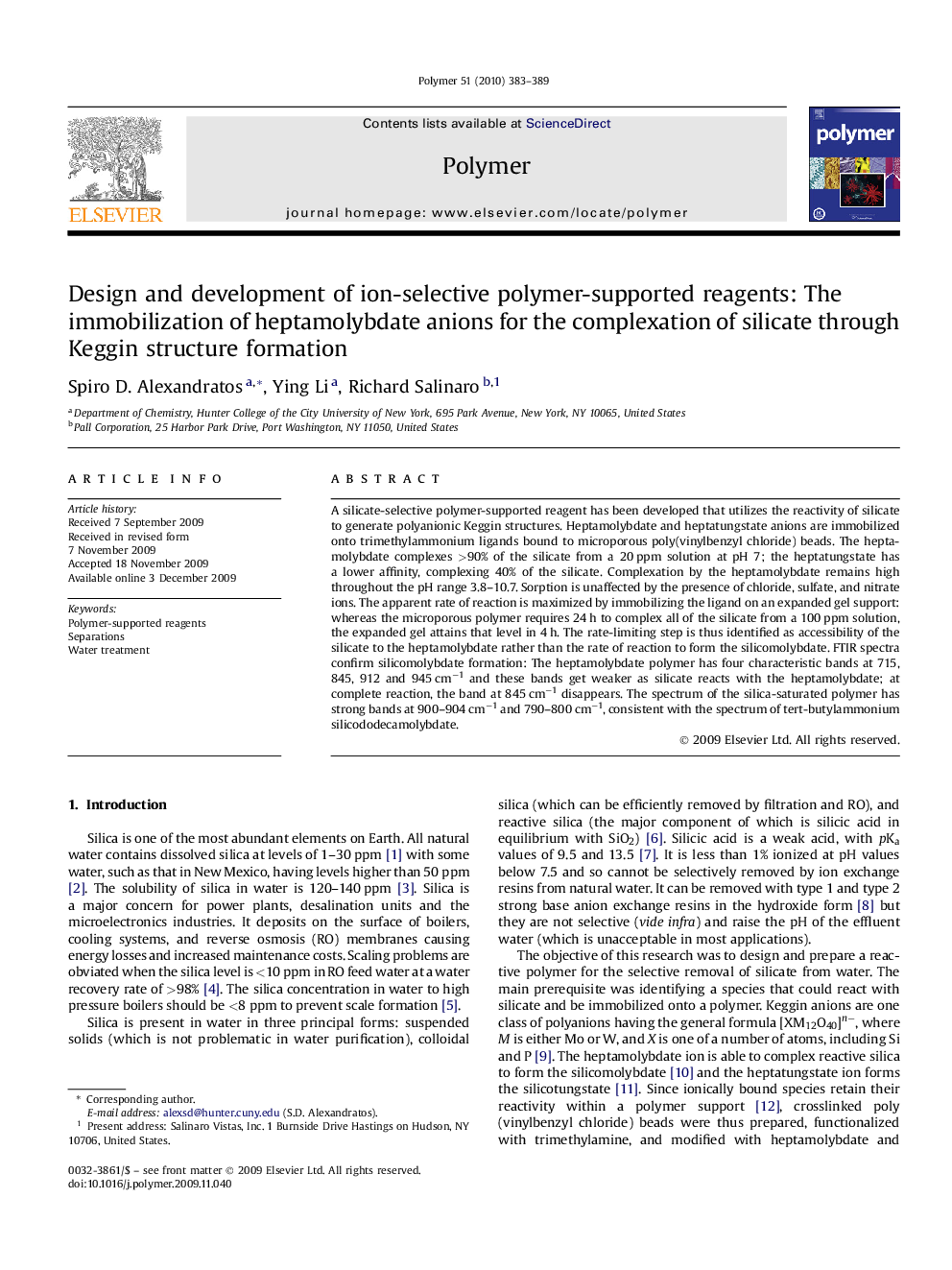| Article ID | Journal | Published Year | Pages | File Type |
|---|---|---|---|---|
| 5185339 | Polymer | 2010 | 7 Pages |
A silicate-selective polymer-supported reagent has been developed that utilizes the reactivity of silicate to generate polyanionic Keggin structures. Heptamolybdate and heptatungstate anions are immobilized onto trimethylammonium ligands bound to microporous poly(vinylbenzyl chloride) beads. The heptamolybdate complexes >90% of the silicate from a 20Â ppm solution at pH 7; the heptatungstate has a lower affinity, complexing 40% of the silicate. Complexation by the heptamolybdate remains high throughout the pH range 3.8-10.7. Sorption is unaffected by the presence of chloride, sulfate, and nitrate ions. The apparent rate of reaction is maximized by immobilizing the ligand on an expanded gel support: whereas the microporous polymer requires 24Â h to complex all of the silicate from a 100Â ppm solution, the expanded gel attains that level in 4Â h. The rate-limiting step is thus identified as accessibility of the silicate to the heptamolybdate rather than the rate of reaction to form the silicomolybdate. FTIR spectra confirm silicomolybdate formation: The heptamolybdate polymer has four characteristic bands at 715, 845, 912 and 945Â cmâ1 and these bands get weaker as silicate reacts with the heptamolybdate; at complete reaction, the band at 845Â cmâ1 disappears. The spectrum of the silica-saturated polymer has strong bands at 900-904Â cmâ1 and 790-800Â cmâ1, consistent with the spectrum of tert-butylammonium silicododecamolybdate.
Graphical abstractDownload full-size image
